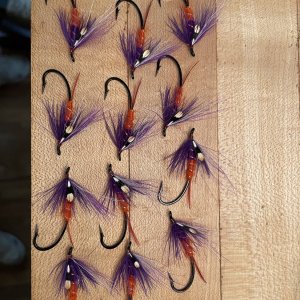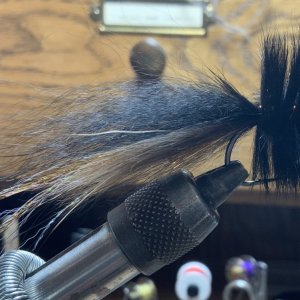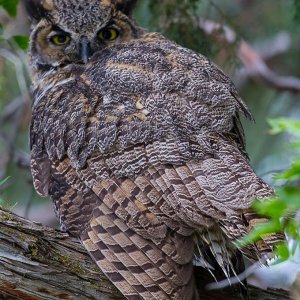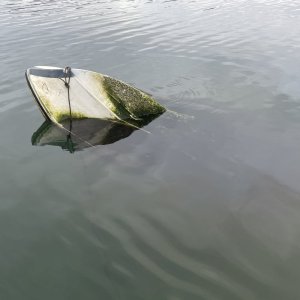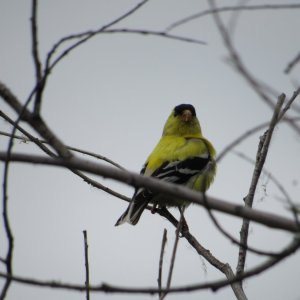speedbird
Life of the Party
I find it a little funny that I have never tried the bread and butter of fly fishing, which is resident trout. I’m quite fascinated with how much detail you can go into with fly selection and hatch matching, and I definitely want to start tying resident flies as well. I have a decent sized box filled mostly with things I got from a fly shop saying “I intend to fish so and so place at so and so time, what works best”? Unfortunately, this has led to me not knowing what most of the flies in my box are, and how I could use them when I am at “such and such place at such and such time” instead. I hope you guys won’t mind taking a look at them with me:
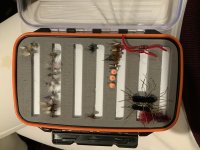
The San Juan worm, egg flies, pats rubber legs and Adams Parachutes are ones I recognize, as well as the two caddis flies on the far left. I recognize the zebra midge and the chrinomid fly, but to be honest I don’t really understand how the two are different besides color, and why the classic colored zebra midge isn’t as popular in lake fisheries from what Google tells me. I think I have some pheasant tail and prince nymphs? I have no clue what the red thing is. It looks like a wooly bugger variant but I remember the person who sold it to me suggested I use it as a nymph at Pass Lake.
I am also curious as to what you guys would suggest I consider adding to the box, I hope to fish alpine lakes, lowland lakes, and rivers, mostly in the early summer and early winter since I spend the rest of my year chasing anadromous or saltwater species. I can tie all the streamers I need to my hearts content and probably do quite well with them, but it is definitely the magic of nymphs and dry fly hatch matching that attracts me to the trout fishery. I’m considering picking up some ant flies and callibaetis for the alpine lake fisheries, as well as some much needed stoneflies. Thanks!

The San Juan worm, egg flies, pats rubber legs and Adams Parachutes are ones I recognize, as well as the two caddis flies on the far left. I recognize the zebra midge and the chrinomid fly, but to be honest I don’t really understand how the two are different besides color, and why the classic colored zebra midge isn’t as popular in lake fisheries from what Google tells me. I think I have some pheasant tail and prince nymphs? I have no clue what the red thing is. It looks like a wooly bugger variant but I remember the person who sold it to me suggested I use it as a nymph at Pass Lake.
I am also curious as to what you guys would suggest I consider adding to the box, I hope to fish alpine lakes, lowland lakes, and rivers, mostly in the early summer and early winter since I spend the rest of my year chasing anadromous or saltwater species. I can tie all the streamers I need to my hearts content and probably do quite well with them, but it is definitely the magic of nymphs and dry fly hatch matching that attracts me to the trout fishery. I’m considering picking up some ant flies and callibaetis for the alpine lake fisheries, as well as some much needed stoneflies. Thanks!

